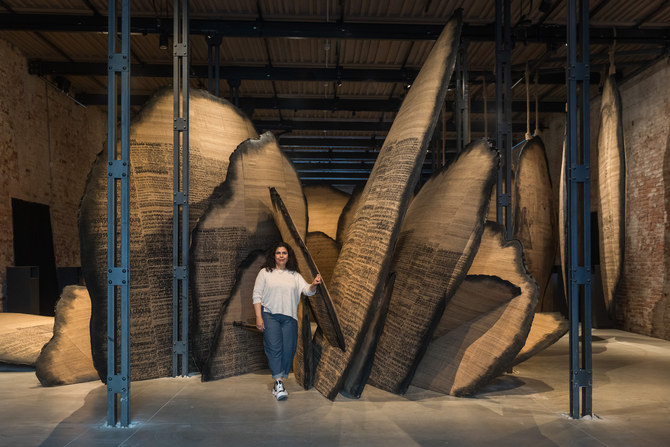DUBAI: The acclaimed Saudi artist Manal AlDowayan is on a roll. Earlier this year, she opened two well-received exhibitions in AlUla, where she is also working on an ambitious land art commission for the upcoming Wadi AlFann cultural destination. And this week, AlDowayan will represent her country at the 60th iteration of the Venice Biennale — dubbed “the Olympics of the art world,” consisting as it does of multiple national pavilions — which runs until Nov. 24. She will be presenting what she describes as “two of my most major works in my career at this point.”
AlDowayan has participated at Venice before. In 2009, she showed her work in an onsite exhibition organized by the Saudi art-focused initiative Edge of Arabia, alongside fellow Saudi artists including Maha Malluh and Ahmed Mater.
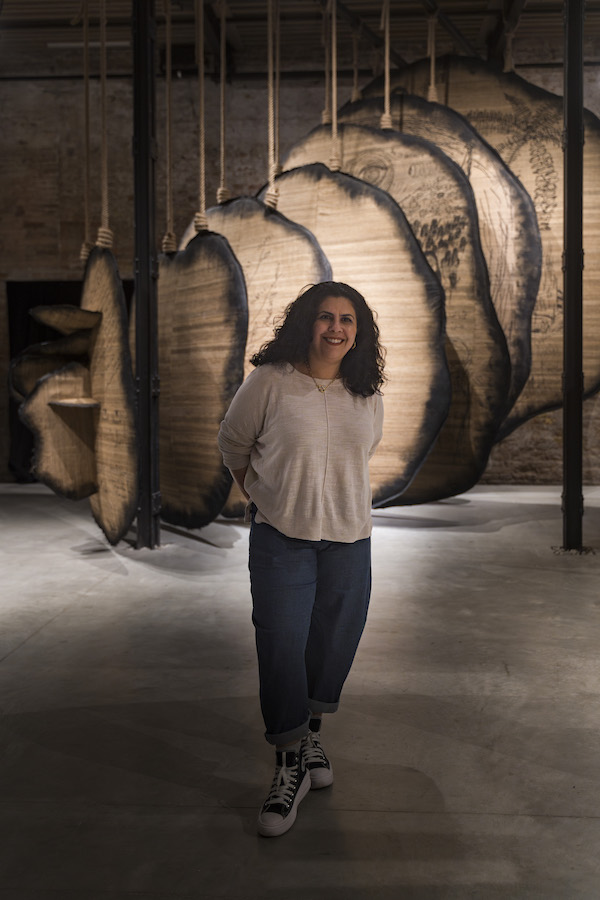
AlDowayan will represent her country at the 60th iteration of the Venice Biennale. (Supplied)
“I’ve been going to Venice for about 12 years,” AlDowayan tells Arab News. “The first time I showed there, I knew in my heart that I would be coming back to represent Saudi Arabia; I would do everything in my power to come to this moment and prepare myself. It’s something very important for an artist: to participate in the Venice Biennale.”
It was only last August that she was visited in her UK studio by Dina Amin, the CEO of the Visual Arts Commission, and cultural advisor Abdullah Al-Turki, and told she had been selected to represent the Kingdom in 2024.
“My first thoughts were: ‘There’s no time,’” she says with a laugh. “To come up with a concept, complete the research, execute the concept, build it, and install it, is really complex. But my team, my studios, and I were ready. I already knew what I wanted to present, and within one week I had put together my proposal and it was approved. The artwork is a continuation of my language, my research and my forms that I work with.”
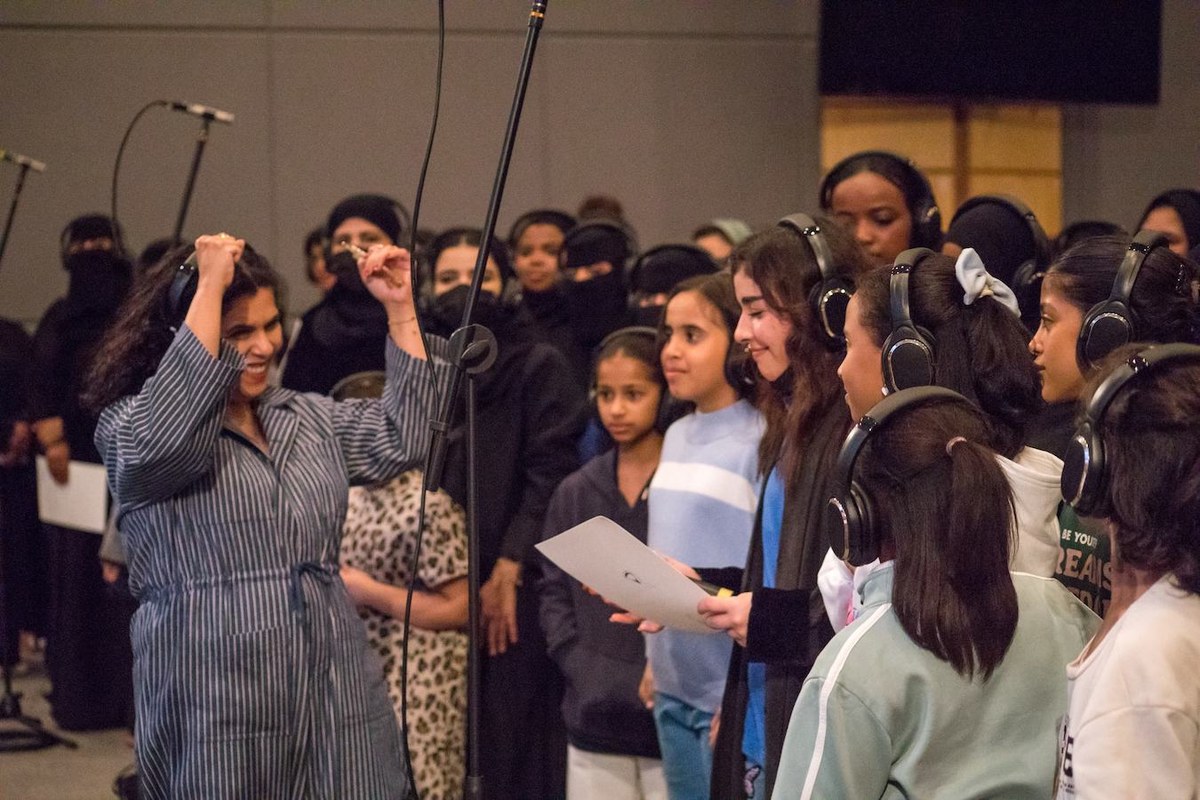
Participatory workshops for 'Shifting Sands - A Battle Song' by Manal AlDowayan. (Supplied)
The Saudi pavilion’s theme at Venice this year is “Shifting Sands—A Battle Song.” It is curated by a trio of female art experts, Jessica Cerasi, Maya El-Khalil, and Shadin AlBulaihed. In AlDowayan’s sound-meets-sculpture installation, she brings together much of what she has explored in her practice over the past two decades — community engagement, participatory art, media (mis)representation, and the visibility, or lack of it, of women in Saudi culture. The work is also about the momentous changes taking place in the Kingdom today, and her response to them.
The work comprises two key parts: sound and soft sculptures. Saudi and Arab women’s voices are front and center; AlDowayan allowing them to reclaim their narrative, which she believes has consistently been misrepresented.
“If you’re always told that you’re oppressed, repressed, depressed… you sort of lose the sense of yourself,” she adds. “And this artwork talks about this sort of constant hounding by Western media — and local media — speaking about the Arab woman; her body, her space, the rules of her behavior, and how she should exist in the public space.”
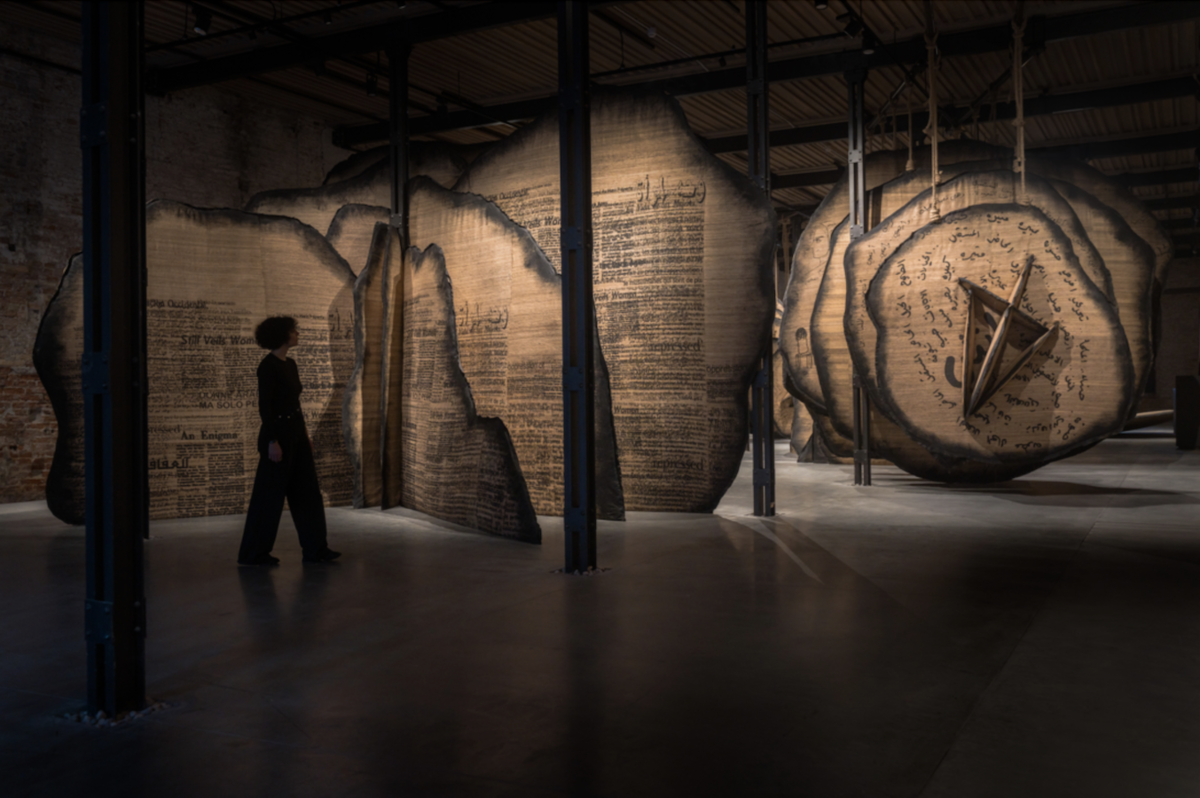
Manal AlDowayan's 'Shifting Sands - A Battle Song.' (Supplied)
For this section, AlDowayan put out an open call inviting women to take part in workshops. They proved very popular, attended by all ages, professions and backgrounds.
“In Riyadh, within three hours, 350 women registered,” she says. “We had to block the registration link because I don’t know how to control 350 women. I’m just one.” In the sessions, participants reacted to negative press headlines and media clippings, and AlDowayan recorded those reactions.
“I always say that people are trying to define what a Saudi woman is,” explains AlDowayan. “We researched thousands and thousands of articles in my studios, in seven languages, and there were some very dark things written. I showed the women these articles and said, ‘Do you really feel these articles are really speaking your truth?’”
She also asked them to write and/or draw their own stories. Examples included: “Two women equal one man.” “Thanks love, we don’t want to be saved.” And “Surrendering doesn’t look good on us, for we are wars.”
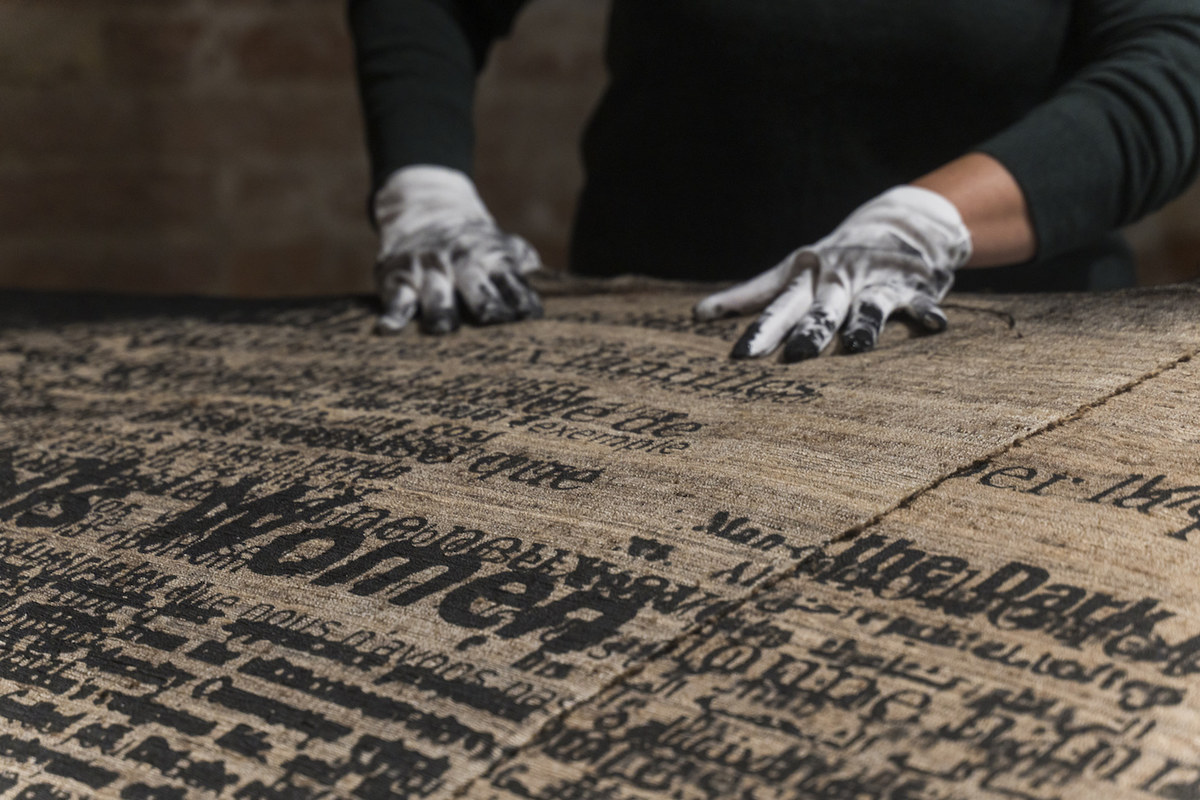
Detail from Manal AlDowayan's 'Shifting Sands - A Battle Song.' (Supplied)
A selection of the written quotes were then read out loud by participants. While reading, they had headphones on, listening to, and harmonizing with, the eerie humming sounds made by sand dunes, which AlDowayan had previously recorded.
“It was beautiful and meditative. You will see women with their eyes closed, their arms stretched out. It was a very spiritual moment,” AlDowayan recalls. The whole ‘performance’ was inspired by ‘Dahha,’ a ritual in which warriors celebrated victory with music and dance.
Inside the pavilion, where the women’s recordings play, stand three soft black-and-brown sculptures, full of folds, shaped like the sand crystals known as desert roses — a recurring motif in AlDowayan’s work.
“The rose is a very weak and delicate (thing),” she says. “But this crystal is born in extreme circumstances. First, it needs to be pouring rain, then there needs to be high temperatures and that’s how it crystalizes. I feel like I’ve adopted this form as a body and I deal with it like skin.”
The folds of the enlarged sculptures are imprinted with “a cacophony of what Western media has written: the veil, repressed, oppressed, women, sexuality… All the words that always float over our heads,” says AlDowayan. They also include some of the women’s positive messages, as well as their drawings.
“While you’re taking this journey you will hear the sound, and sound is sculptural in my opinion: It occupies but you can’t see it,” she says. “I feel the invisibility of sound, and its ‘presence’ is like the Arab woman. She’s strong, she’s there; it’s undeniable. Just because you don’t see her, it doesn’t mean she doesn’t exist.”
As for how visitors will react to her work, AlDowayan hopes to provoke conversations.
“I want questions. I want extreme emotions. They can hate it, they can love it, they can cry. But, I can’t do neutral,” she says. “Neutral means I did not succeed. If they have questions, then I’ve succeeded. If they talk about it after one day, I’ve succeeded.”


